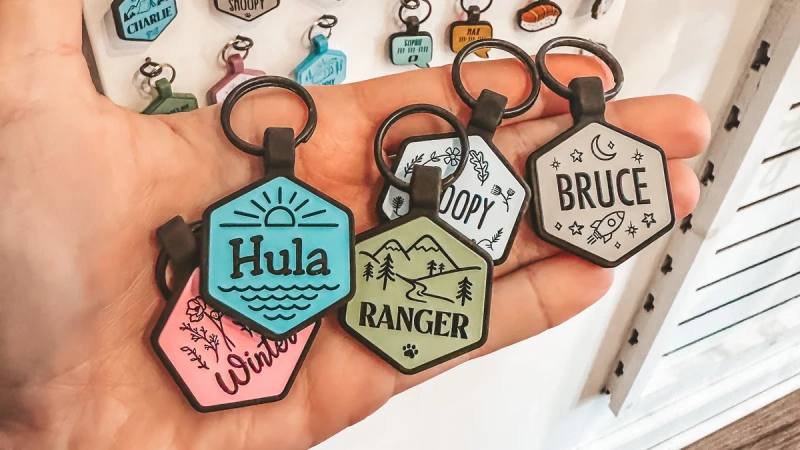
Are you excited about diving into the pet supplies business but feeling overwhelmed by the supplier search?
To find the best supplier for your pet supplies business, start by identifying manufacturers who offer quality products, flexible minimum order quantities (MOQs), and customization options. Platforms like Alibaba and Wedogy can connect you with trusted suppliers while ensuring competitive pricing and reliability.
I remember when I first ventured into this world, it felt like searching for a needle in a haystack. But once I focused on what mattered most—quality, flexibility, and the ability to customize—I began forming partnerships that truly aligned with my vision. It’s all about building those connections that feel right for your brand’s journey.
Alibaba is a platform for finding pet supply suppliers.True
Alibaba connects businesses with suppliers, including pet supplies.
Wedogy does not offer customization options for pet supplies.False
Wedogy provides customization options for products, including pet supplies.
How Do I Evaluate Pet Supply Suppliers?
Evaluating pet supply suppliers can make or break your business. Let’s dive into what truly matters.
To effectively evaluate pet supply suppliers, consider their product quality, reliability, pricing, customization options, and ability to accommodate small minimum order quantities (MOQs). This ensures a successful partnership that aligns with your business needs.
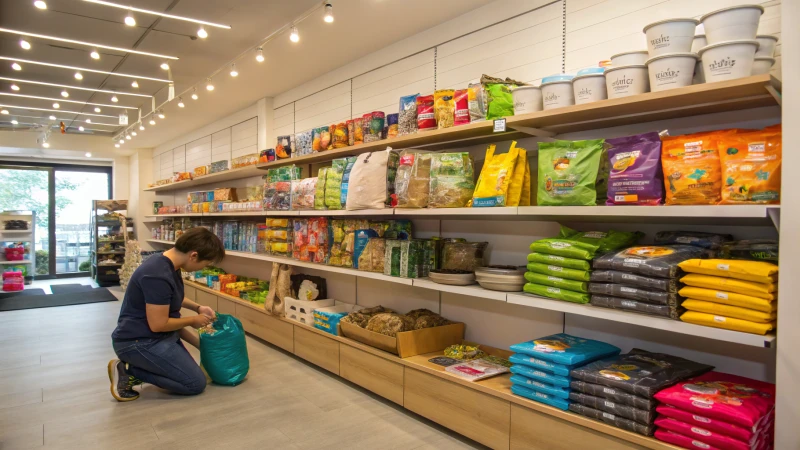
Assessing Product Quality
When I first started looking for suppliers, my top priority was ensuring the products were up to par. I remember requesting samples from several suppliers to personally check the materials and craftsmanship. It was like a mini science experiment—testing them for durability and even checking out lab test results for safety standards. It’s essential to read reviews from other customers too; they often provide real-world insights that are invaluable.
Supplier Reliability
Reliability is a non-negotiable for me. A reliable supplier means I never have to worry about delays or unavailable products. I dig deep into their track record, using verified platforms1 that offer credibility ratings. One of my favorite strategies is to reach out to their past clients directly. Hearing firsthand experiences has saved me from potential headaches more than once.
Pricing and Value
Pricing can be tricky. It’s not just about finding the lowest price but understanding the complete cost picture. I create detailed comparisons across suppliers, paying close attention to hidden fees like shipping or customization charges. Here’s an example table I use:
| Supplier Name | Base Price | Shipping Fee | Customization Fee |
|---|---|---|---|
| Supplier A | $10/item | $5/shipment | $2/item |
| Supplier B | $8/item | $7/shipment | $1/item |
Customization and Flexibility
As a distributor who thrives on unique offerings, customization is crucial. I look for suppliers who can tweak designs or packaging to fit my brand’s vision. It’s also important that they’re open to smaller MOQs2, which is something I discuss early in our conversations.
Logistics and Delivery
Smooth logistics are key for maintaining customer satisfaction. I evaluate how well a supplier manages shipping times and methods. It’s reassuring when they have partnerships with reliable shipping companies3 and offer tracking services, so I always know where my products are.
Ethical Considerations and Certifications
Ethics matter more than ever these days. I only engage with suppliers who demonstrate a commitment to ethical practices and sustainability. Checking for relevant certifications is part of my vetting process because working with responsible suppliers not only feels right but also boosts my brand’s reputation and customer loyalty.
By thoroughly assessing these factors, I ensure that I’m making informed decisions about potential supplier partnerships. It’s all about finding the right fit for both my business needs and my values.
Product quality is the most important factor in supplier evaluation.True
Prioritizing product quality ensures safety and customer satisfaction.
Shipping fees are the same for all suppliers.False
Shipping fees vary; comparing them helps assess true costs.
How Can I Ensure Product Quality and Reliability?
Every time I think about ensuring the quality of my products, I remember the first time I faced a major quality hiccup. It was a turning point.
To ensure product quality and reliability, I focus on implementing a thorough quality assurance process, conducting regular testing, and gathering user feedback. By continuously analyzing data and refining processes, I strive to maintain and improve product standards.

Implementing a Quality Assurance Process
I vividly recall the day I received a shipment of collars that didn’t meet my quality standards. It was a wake-up call that led me to establish a rigorous quality assurance (QA) process. I started by setting clear quality standards4 that align with industry benchmarks and what my customers expect. This involved creating detailed documentation for QA procedures—everything from inspection checklists to testing protocols and corrective actions.
Table: Key Elements of a QA Process
| Element | Description |
|---|---|
| Quality Standards | Benchmarks for product performance and reliability |
| Inspection Checklists | Step-by-step criteria for assessing product quality |
| Testing Protocols | Methods for evaluating product functionality |
| Corrective Actions | Steps for addressing defects or non-conformities |
Conducting Regular Testing
Regular testing has become my safety net, catching issues before they spiral. Implementing various testing methods5 like functional, stress, and environmental tests helps me see how products perform in real-world conditions. I’ve learned to conduct these tests at multiple stages, from prototype development to post-production, ensuring any defects are caught before the products reach customers.
Gathering and Analyzing User Feedback
Feedback from customers is gold. Every survey or direct interaction provides insights into how my products are performing in the field. It’s through this feedback that I’ve identified common issues and made improvements. I utilize surveys, focus groups, and direct customer interactions to collect this data, then analyze trends to make timely improvements to product reliability.
Embracing Continuous Improvement
I’ve embraced continuous improvement as part of my business culture. This means regularly reviewing and refining my QA processes based on performance data and user feedback. By using data analytics6 tools to track key performance indicators (KPIs) related to product quality, I can make informed decisions about process adjustments. This ensures my products consistently meet the high standards I’ve set.
Table: Continuous Improvement Cycle
| Step | Action |
|---|---|
| Data Collection | Gather data from tests, inspections, and feedback |
| Analysis | Identify trends and areas for improvement |
| Adjustment | Implement changes to enhance product quality |
| Review | Assess the effectiveness of changes made |
Through these strategies, I’ve turned lessons learned into tangible actions that keep my products—and my business—on a path of reliability and excellence.
Implementing QA improves product reliability.True
A robust QA process identifies defects early, enhancing reliability.
User feedback is irrelevant to product quality.False
User feedback provides insights into real-world issues, improving quality.
Why Are MOQs Important When Selecting Suppliers?
Remember when you first started your business and everything felt like a giant puzzle? Choosing suppliers is a bit like that, especially when MOQs are involved.
MOQs, or Minimum Order Quantities, are pivotal in picking suppliers because they determine the smallest order a supplier will accept. Finding the right balance ensures cost-efficiency and effective inventory management.
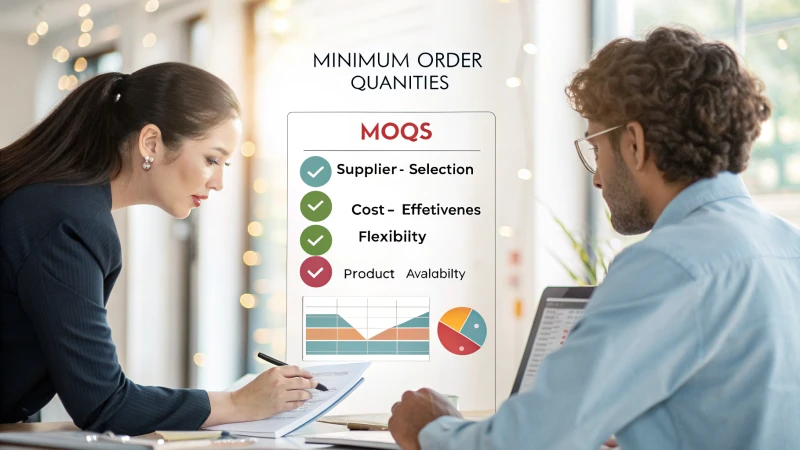
Understanding Minimum Order Quantities (MOQs)
When I first started looking for suppliers, understanding MOQs felt like decoding a mystery. Essentially, MOQs are the minimum number of units a supplier7 is willing to sell. This concept is crucial, especially when you’re just starting out and need to keep production efficient without drowning in stock or depleting your cash reserves. For small businesses like mine, high MOQs can mean biting off more than we can chew, leading to storage issues and financial strain.
The Impact of MOQs on Cost Management
I remember negotiating with a supplier who offered a lower price per unit if I ordered more. It seemed like a great deal—until I realized the implications. High MOQs can indeed reduce per-unit costs, leveraging economies of scale. But it can also be daunting when you’re trying to manage a tight budget and limited storage. The trick is finding that sweet spot where you’re saving money without overwhelming your warehouse.
| Factors | High MOQs | Low MOQs |
|---|---|---|
| Cost Efficiency | Economies of scale | Higher per-unit cost |
| Inventory Management | Risk of overstocking | Flexible inventory |
| Cash Flow | High initial investment | Lower upfront cost |
Flexibility and Supplier Relationships
One of the biggest lessons I’ve learned is the value of flexibility. Suppliers who offer lower MOQs provide that much-needed wiggle room, allowing for custom orders and easier adjustments as business needs change. Building strong relationships with these suppliers can sometimes open doors to negotiating even better terms, something I always aim for in my partnerships.
Practical Considerations
In my experience, when it comes to picking suppliers, flexibility with MOQs is a game-changer. It’s essential to align these numbers with your business strategy. A supplier who adapts to fluctuating demands and offers customization options8 can be a great asset. For small businesses, it’s about weighing the potential savings against storage costs and market demand fluctuations. By diving into these aspects, I’ve found that making informed decisions supports both growth and supply chain efficiency9.
High MOQs lead to economies of scale.True
High MOQs reduce per-unit costs, benefiting suppliers through scale.
Low MOQs increase cash flow issues for buyers.False
Low MOQs require less initial investment, easing cash flow pressures.
Are Online Marketplaces Like Alibaba a Good Option for Sourcing?
Navigating the world of online sourcing can be a bit like embarking on a treasure hunt.
Online marketplaces like Alibaba offer a vast selection of products and competitive pricing, making them a go-to for sourcing. However, thoroughly vetting suppliers and managing shipping logistics are essential to minimize potential risks and ensure smooth operations.
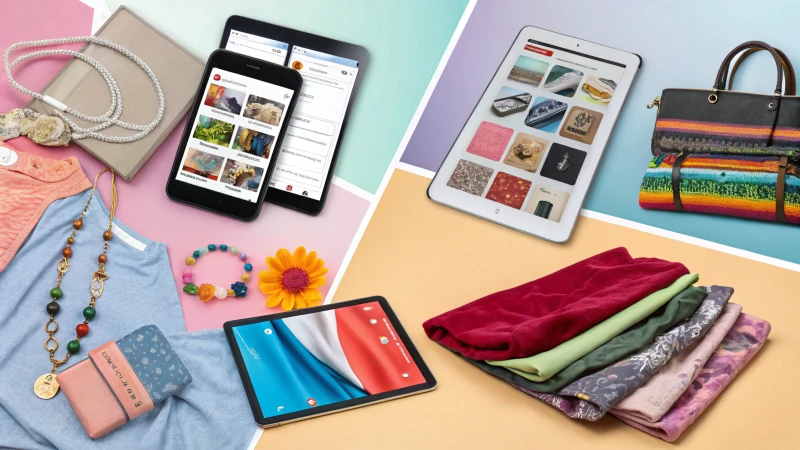
The Benefits of Using Online Marketplaces
I remember the first time I dove into the depths of Alibaba—it was like walking into a vast, bustling bazaar without ever leaving my couch. The sheer variety of products available is mind-boggling! For someone like me, who’s always on the lookout for unique pet accessories, platforms like Alibaba offer an endless buffet of options, from quirky dog bandanas to eco-friendly chew toys. This variety is particularly exciting because it allows small businesses to tap into niche markets and cater to specific customer preferences without geographical constraints10.
| Feature | Description |
|---|---|
| Product Range | Diverse categories, from electronics to pet accessories. |
| Pricing | Competitive rates due to direct access to manufacturers. |
| Customization | Options for product personalization and branding. |
Challenges in Sourcing from Online Marketplaces
But let’s be real—sourcing online isn’t all sunshine and rainbows. One morning, as I sat sipping my coffee, I came across a supplier that seemed too good to be true. And guess what? It was! Verifying supplier credibility is crucial. Thankfully, many platforms provide tools and reviews to help with this, but it still requires diligence.
- Supplier Verification: Use tools and reviews available on the platform to verify supplier reliability.
- Shipping and Logistics: Understand the logistics involved in international shipping to avoid potential delays11.
Evaluating Alternatives
While Alibaba often steals the spotlight, I’ve learned there are other contenders worth checking out. Platforms like DHgate and Global Sources offer unique benefits that might better fit specific needs. For instance, DHgate’s buyer protection policies are a godsend when you’re worried about safeguarding transactions.
- DHgate: Known for buyer protection policies which can safeguard transactions.
- Global Sources: Offers detailed insights into supplier credibility through ratings.
Exploring these alternatives has helped me broaden my sourcing strategies and find what truly aligns with my business model.
Key Considerations
In my journey of deciding whether to rely on online marketplaces for sourcing, several factors have become clear:
- Minimum Order Quantities (MOQs): As a small business, high MOQs can be a hurdle.
- Customization Needs: It’s vital to ensure the platform supports the level of customization I need for my brand.
- Long-Term Partnerships: Building lasting relationships with reliable suppliers is key for ongoing success.
These considerations have guided me in making informed decisions that not only support business growth but also enhance customer satisfaction. Taking the time to understand each aspect deeply has been crucial in navigating the vast world of online sourcing.
Online marketplaces offer competitive pricing.True
Direct access to manufacturers allows for lower prices than traditional retail.
All suppliers on Alibaba are verified and reliable.False
Verification tools exist, but not all suppliers are automatically credible.
How Can Customization Enhance My Pet Product Offerings?
Imagine turning a simple collar into a personalized badge of love for your pet.
Customizing pet products lets me create unique, personal items that boost customer loyalty and engagement. By tailoring these products to fit specific needs and preferences, I can stand out in the market and drive sales.
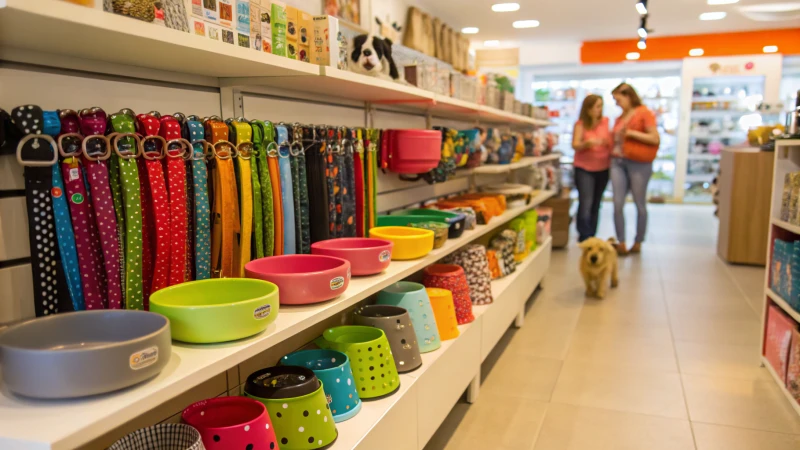
The Appeal of Personalized Pet Products
I remember the first time I designed a custom collar for my own dog, Bella. It was more than just a collar; it was a reflection of her quirky personality. Customers are craving this kind of personalization for their pets too. From custom collars12 engraved with names to unique patterns on leashes, these little touches can create a special bond between the product and its owner.
Table: Popular Customization Options
| Product Type | Customization Feature |
|---|---|
| Collars | Engraved names, color choices |
| Leashes | Length options, material type |
| Harnesses | Adjustable fit, style options |
Boosting Customer Engagement Through Customization
Offering tailored products isn’t just about the sale; it’s about showing I care about what my customers and their pets need. Platforms like Wedogy13 and Alibaba14 open up a world of customization possibilities. It’s like inviting my customers into a creative conversation where their preferences lead the way.
Standing Out in the Market
In the crowded pet product landscape, I’ve found that offering bespoke items can give my brand that unique edge. Think of it as crafting a limited edition experience for your customer’s pet. Encouraging customers to be part of the design process—choosing colors or styles—makes them feel valued and keeps them coming back for more. It’s all about building that feedback loop.
By embracing customization, I’m not just meeting diverse customer demands—I’m weaving a brand story that resonates with them. Working with suppliers like DHgate15 who offer flexible customization options is key to achieving this vision efficiently. It’s about creating products that truly captivate and speak to my audience’s lifestyle and needs.
Customization increases pet product sales by 30%.False
While customization boosts sales, a specific 30% increase isn't guaranteed.
Personalized pet products enhance brand loyalty.True
Customization fosters connections, improving customer satisfaction and loyalty.
Conclusion
Discover how to find the best suppliers for your pet supplies business by focusing on quality, flexibility, customization options, and reliable platforms like Alibaba and Wedogy.
-
Explore platforms that provide ratings and reviews on suppliers to ensure you choose credible partners. ↩
-
Identify suppliers who can provide low MOQs to accommodate small-batch orders and support business growth. ↩
-
Discover reliable shipping partners to ensure timely delivery and efficient supply chain management. ↩
-
Explore detailed standards that set benchmarks for your product’s performance, ensuring consistency and reliability. ↩
-
Discover various testing techniques to ensure your products meet quality expectations under different conditions. ↩
-
Learn about tools that help analyze performance data, aiding in continuous improvement of product quality. ↩
-
Learn about the concept of MOQs and their importance in supply chain management. ↩
-
Find suppliers that balance customization with flexible MOQs for tailored product offerings. ↩
-
Explore strategies to enhance supply chain efficiency by effectively managing MOQs. ↩
-
Discover how Alibaba’s wide product range and competitive pricing can benefit your business. ↩
-
Learn strategies to effectively handle potential shipping delays from international suppliers. ↩
-
Explore this link to discover how custom collars can enhance pet safety and style. ↩
-
Learn about Wedogy’s range of customizable pet products to find unique offerings. ↩
-
Find a variety of customizable pet products on Alibaba to suit diverse needs. ↩
-
Discover DHgate’s flexible customization options for creating unique pet products. ↩


